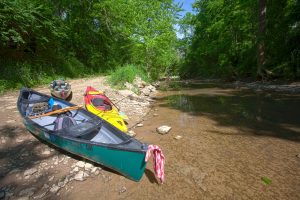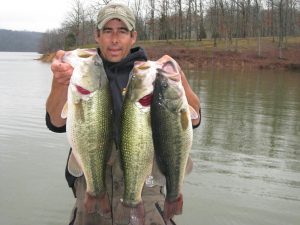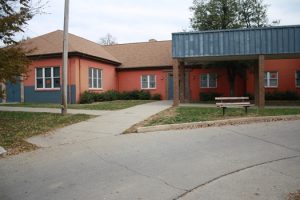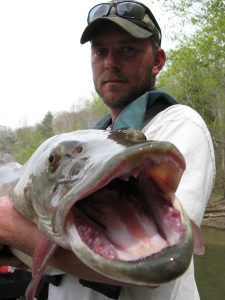 During the month of June the Kentucky Artisan Center will present “The Sands of Time” a 10 ton sand sculpture by Damon Farmer; a reading by Kentucky’s new Poet Laureate Frederick Smock, demonstrating artists creating handmade artist books, and authors Crystal Wilkinson and Terry Foody signing copies of their books.
During the month of June the Kentucky Artisan Center will present “The Sands of Time” a 10 ton sand sculpture by Damon Farmer; a reading by Kentucky’s new Poet Laureate Frederick Smock, demonstrating artists creating handmade artist books, and authors Crystal Wilkinson and Terry Foody signing copies of their books.
The month begins with a demonstration on June 3, by Whitney Withington who joins recycled wood, decorative handmade papers, waxed linen threads and hand-torn archival pages with Coptic stitch binding. Her journals give creative space for people’s drawings and stories.
The Kentucky Artisan Center celebrates Kentucky’s 225th Anniversary with the creation of an original sand sculpture by internationally known sand sculptor Damon Farmer, bringing Kentucky history to life in sand.
Beginning on Saturday, June 3 and continuing on June 4, June 5 and June 6, Farmer will sculpt a huge pile of compacted sand into intricate imagery. From 9 a.m. to 6 p.m. on June 4, 5, and 6, visitors are invited to watch Farmer carve and shape sand using only the simplest of tools. Carving from top to bottom, he will carefully sculpt the wet sand to illustrate moments in Kentucky’s history. Come watch!
On Friday, June 9, the Kentucky Artisan Center will celebrate the completion of a historic sand sculpture by Damon Farmer, with an open to the public event beginning at 10:30 a.m. The artist will be present along with guest speakers including Tourism, Arts and Heritage Deputy Secretary Regina Stivers, Travel and Tourism Commissioner Kristen Branscum and newly designated poet laureate Frederick Smock, of Louisville, reading selected poems. The celebration will continue all day long as visitors can enjoy free birthday cake, a candy tasting by Ruth Hunt Candy and cheeseburgers for $2.25 all day.
Then on Saturday, June 10, artist Linda Kuhlmann, of Berea, will demonstrate how she creates her one-of-a-kind books from 10:30 a.m. to 3:30 p.m.
Kuhlmann began making journals in response to the way the process of writing is changing in society. With acronyms and emoticons are being used instead of words, Kuhlmann hopes that the handmade journals she makes will speak to the more personal and artistic side of writing.
Also on June 10, the Center will offer free guided gallery tours of the exhibit “225: Artists Celebrate Kentucky’s History” at both 11 a.m. and again at 2 p.m.
On June 17, three members of the Berea Welcome Center Carvers will demonstrate a variety of woodcarving styles and techniques from 10:30 a.m. to 3:30 p.m.
Then on Saturday, June 24, to help celebrate books, well-known author Crystal Wilkinson and newly published author Terry Foody will be signing copies of their books from 11 a.m. to 2 p.m. at the Center.
Wilkinson recently won the Ernest J. Gains Award for Literary Excellence and her book “The Birds of Opulence” was named the winner of the 2016 Weatherford Award for Fiction and the 2017 Judy Gaines Young Book Award..
Author Terry Foody has worked in community health in New York State and Kentucky, taught nursing at
Kentucky State University, and coordinated research projects at the University of Kentucky. She has lectured about cholera for the Kentucky Humanities Council and written the book, “The Pie Seller, The Drunk, and the Lady: Heroes of the 1833 Cholera Epidemic in Lexington Kentucky.”
Both Authors will be available to talk about their writing and sign copies of their books from 11 a.m. to 2 p.m. that day at the Center.
The Kentucky Artisan Center at Berea is located at 200 Artisan Way, just off Interstate 75 at Berea Exit 77. The center’s exhibits, shopping and travel information areas are open daily, year-round, from 9 a.m. to 6 p.m., and the cafe is open from 9 a.m. to 4 p.m. Admission is free. For more information about center events call 859-985-5448, go to the center’s website, or visit the center’s Facebook page.

Photo: Kentucky Department Fish and Wildlife
The weather forecast calls for a redbud winter to hit this week. This old saying refers to cold snaps that occur in early April when the redbud trees bloom.
The up and down nature of spring weather can cause consternation among anglers when planning fishing trips. Concerns about the weather is one of three things to consider when planning fishing trips this spring.
1. Barometric pressure is key to unlocking fish behavior in spring:
Barometric pressure is the measurement of the weight of an entire column of air pressing down upon the Earth. Approaching storm fronts in spring ease this weight, resulting in low barometric pressure. The low pressure releases humidity trapped in the atmosphere, resulting in rain or snow.
The dark, low clouds, winds and precipitation that accompany low pressure systems limit light penetration into the water column, providing a better environment for predator fish to ambush prey. Fish do bite better before a front.
High pressure systems follow low pressure frontal systems. In North America, high pressure systems flow out in a clockwise pattern, resulting first in winds from the north and eventually from the east.
“I don’t believe in too many old wives tales when it comes to fishing, but ‘wind from the east, fish bite least’ is one I do believe in,” said Maj. Shane Carrier, assistant director of Law Enforcement for the Kentucky Department of Fish and Wildlife Resources. “I don’t catch many fish when the wind is from the east.”
A couple of days of stable weather in spring ease the influence of high pressure and get fish biting again. The sunny days typical of high pressure warm the water and stir fish activity.
Plan your trips this spring to fish either right before a low pressure system or on the third or fourth day of stable weather.
2. Making sense of the USGS streamflow charts to plan float trips on Kentucky streams:
The streamflow information on the U.S. Geological Survey (USGS) webpage at www.waterdata.usgs.gov provides invaluable information for paddlers and anglers. On this page, select Kentucky from the drop down menu on the top right hand corner to view the flow on streams on all of the river drainages in Kentucky.
The rate of flow on this page shows as CFS or cubic feet per second. The cubic feet per second expresses the amount of flow that passes the USGS stream gauges per second. The higher the CFS, the higher and swifter the water.
The chart for an individual stream shows the discharge for each day of the preceding week as well as the current day. A small triangle on the chart shows the median, or midpoint, flow for each day based on years of data. A flow measuring much higher than the median means high, and usually muddy, water, not the best conditions for fishing and floating.
A flow under the median usually means tolerable fishing and paddling conditions. The USGS streamflow page also has a chart showing the gauge height for each stream. This helps flesh out the data provided by the streamflow chart. This chart provides a good mental image of the rise, fall or stability of the stream over the last week.
The new Canoeing and Kayaking page on the Kentucky Fish and Wildlife website at www.fw.ky.gov is another invaluable repository of information for stream anglers and paddlers. This page leads to information collected by biologists concerning the fish populations in a stream, the recommended levels for floating selected streams, photos of access sites and fishing tips. The page also contains a link to the Blue Water Trails series, an ongoing initiative detailing the paddling and fishing on streams across Kentucky as well as a printable map.
3. What is a daily creel limit and a possession limit for fishing?
Anglers often get confused about these terms, especially when they are fishing three or more to a boat.
“Whenever anyone is fishing in Kentucky, each angler is entitled to the daily creel limit for that species on that lake, river or stream,” Carrier explained. “There is no boat limit in Kentucky.”
For example, if three anglers fish for crappie on Kentucky Lake out of one boat, each is entitled to 20 crappie, the daily creel limit for crappie on Kentucky Lake and Lake Barkley. There is also a 10-inch minimum size limit for crappie on these lakes, therefore anglers must immediately release any crappie caught less than 10 inches long.
The possession limit is the amount of unprocessed fish a person may hold after two or more days of fishing. In Kentucky, this amount is two times the daily creel limit for any species that has a daily creel limit.
Keep these things in mind as you plan and execute fishing trips this spring. Remember to buy your 2017-2018 fishing license, as the new license year began March 1.

Photo: Kentucky State Parks
Experience the beauty of the Carter Caves Wildflower Pilgrimage April 21-22 at Carter Caves State Resort Park near Olive Hill.
Throughout the weekend guests will experience the beauty of the area during wildflower walks. This is the perfect weekend for experienced wildflower enthusiasts, beginner bloomers or those who just enjoy being in the woods to get outside and experience the natural beauty of spring.
The event is sponsored by the Friends of Carter Caves. All trips are free this year.
Participants will be able to sign up for the hikes at the park. Overnight lodging and camping is available. The park’s friends group will host a hot dog cook out on Saturday with proceeds benefiting the park.
Call the park at 606-286-4411 for more information or to make lodging reservations.
In addition to cave tours, Carter Caves offers hiking, mini-golf, fishing and a gem mine. Carter Caves also has a lodge, cottages and restaurant. For more information, call the park at 1-800-325-0059 or visit parks.ky.gov/
Now that the Kentucky-based teams are no longer in the NCAA basketball tournament, the Final Four isn’t nearly as exciting, and somewhat depressing, to watch.
The best cure for any bruised feelings left by March Madness is to get out in early April and chase largemouth bass. A huge largemouth bass shaking its head vigorously trying to throw your white spinnerbait soothes any broken basketball heart.
Water temperatures range from 52 degrees at Lake Cumberland in the east to 58 degrees on Kentucky Lake in the west. In other words, it is prime time.
“With water temperatures in the mid-50s, the big female largemouth bass are staging,” said Jeff Ross, assistant director of Fisheries for the Kentucky Department of Fish and Wildlife Resources. “They are moving from their deeper winter locations to spawning locations in the shallows. They definitely work their way shallow in stages, but a cold front can push them back for a short period.”
At this time of year, the male largemouth bass move shallow first to build nests, followed by the female bass to lay their eggs.
“Recently, I caught a lot of largemouth bass, but they were all small male bass,” said Easton Copley, aquatic education program coordinator for Kentucky Fish and Wildlife. “When you look at their lips, they were roughed up and bloodied. They looked like they had lipstick on them from making spawning beds.”
Copley recommends looking for those staging areas to catch the large female largemouths. Female largemouth bass stage where large mud flats drop-off into deeper water. This is especially true on smaller state-owned lakes.
“At this time of year, I am not looking for numbers of bass,” Copley explained. “I am fishing for big females.”
Ross said to hit the secondary points or ledges near shallow water on the larger reservoirs, such as Kentucky Lake or Barren River Lake. “When the females hit those secondary points in spring, they are pretty close to spawning,” he said.
Copley said when water temperatures climb to 60 degrees, the larger female bass move into their shallow water spawning areas. “I look for rocky banks and transitional banks from rocky to mud,” he said. “If you can find a laydown tree on this kind of bank, all the better.”
Copley throws a variety of lures when spawning bass are up shallow. “I’ve caught a lot of bass on a square-billed crankbait in the Sexy Shad color,” he said. “I also catch quite a few on jigs. Black and blue is my go-to jig color for lakes with some color to the water. In clear water, I like the Cumberland Craw color for my jigs at this time of year.”
White spinnerbaits with a white and chartreuse trailer also draw strikes from shallow spring largemouth bass.
“When the bite gets tough, I pull out a Shakey head with a black and blue 7-inch straight-tailed worm,” Copley said.
Anglers who plan to release their catch need to release the female largemouth bass back to the same area during the spawn. “Take a photo and get them back in the water as soon as possible so they can get back to their spawning,” Copley said. “They are full of eggs.”
Kentucky anglers have oodles of options to catch spring largemouth bass. Check the 2017 Fishing Forecast

Photo: Kentucky Department Fish and Wildlife
for productive largemouth bass lakes near you.
Copley’s favorite lake is south-central Kentucky’s Green River Lake. He also likes 784-acre Cedar Creek Lake in Lincoln County. “Guist Creek Lake near Shelbyville has lots of big fish, but can be tough to fish because of high fishing pressure,” he said.
Kentucky Lake and Lake Barkley ranked number 4 in the Southeast Region for 2016 on Bassmaster Magazine’s Best Bass Lakes in the Country rankings. These lakes offer arguably the best chance in Kentucky to catch largemouth bass 4 pounds and larger
“We have many lakes where you don’t need a 20-foot bass boat to catch a big bass,” Ross explained. “Our smaller state-owned lakes, such as Kincaid Lake in northern Kentucky and Lake Malone in western Kentucky, are trophy largemouth bass lakes. Both of these lakes have excellent facilities for anglers at Lake Malone State Park and Kincaid Lake State Park. Beshear Lake, mainly located inside Pennyrile State Forest in western Kentucky, is always a big bass producer. Cranks Creek Lake in southeastern Kentucky also has some huge bass in it.”
The Final Four may be a bummer for Kentuckians this year, but warm days and trophy largemouth bass will put the NCAA tournament in the rearview mirror.
Remember to buy your 2017-2018 fishing license if you haven’t already.

Photo: Louisville Metro Government
Bridges of Hope Neighborhood Place will host its Second Quarterly Community Resource Fair for the Park Hill neighborhood this Saturday, April 8. Themed “Sowing the Seeds of Peace”, the event will be held at the Park Hill Community Center, 1703 South 13th St. from 12 – 4 p.m.
Focusing on residents who live in or near the Park Hill neighborhood — an area just west of Old Louisville which has experienced a disproportionate number of violent deaths – this event is open to all members of the public. More than 30 public, private and non-profit agencies will gather to meet with residents and share information about programs and services.
A giant Easter Egg Hunt will take place at the Park Hill Park directly behind the community center at 3 p.m. for children ages 2-10, sponsored by the Louisville Metro Community Policing Unit. DJ Samosa will spin tunes throughout the day and there will be several prize giveaways including an Easter basket valued at $50.00 and a Microsoft Application online training course valued at $295.00.
The Smile Academy of Kentucky, a mobile dental unit, will provide cleanings, fluoride treatments, and sealants for children 2-18 years of age during the event.
Resources and information will be provided in the following areas:
- Employment opportunities and career preparation
- Educational programs
- Housing
- Legal Issues
- Family services
- Mental and physical health
- Public safety
- Activities and employment for youth
- Community building
“We’re excited to host this great day of community building to once again bring together much needed resources and to support families in breaking the cycle of violence”, stated Nannette Dix, Administrator of Bridges of Hope Neighborhood Place, located in the Park Hill neighborhood.”
The following groups plan to participate: Louisville Metro Government (including Community Services, Parks and Recreation, the Mayor’s SummerWorks Program, the Office for Safe and Healthy Neighborhoods and Community Policing Unit), REimage, Louisville Urban League, Exploited Children’s Help Organization (ECHO), KentuckianaWorks, Family Scholar House, Louisville Metro Housing Authority, Louisville Metro Healthy Start, Smile Academy of Kentucky and many others.
For more information about the Park Hill Community Resource Fair, contact Nannette Dix at 502-634-6057 or Nannett.Dix@louisvilleky.gov.

Photo: KDF
Spring break for many conjures thoughts of traveling somewhere warm and catnapping on a beach between rounds of golf.
A staycation sounds much better if you’re a muskellunge angler from Kentucky. The state’s muskellunge fishery has earned a reputation that extends beyond its borders, and experienced anglers know spring is one of the can’t-miss times of the year.
“Your odds of catching a trophy are better in the spring and fall,” said Tom Timmermann, northeastern fisheries district biologist for the Kentucky Department of Fish and Wildlife Resources. “In the fall, they’re packing on that weight to get through the winter. In the spring, if you catch those females before they release their eggs, they’re full of eggs. Either way, you’re looking at a chance at some bigger fish.”
Kentucky lies within the natural range of the Ohio strain of muskie, but the population in lakes and streams now is supported with stocking.
The bloodlines of these young predators trace to broodstock collected each spring from the Licking River. Kentucky Fish and Wildlife’s Minor Clark Fish Hatchery at the foot of Cave Run Lake Dam raises every muskellunge stocked in Kentucky.
Buckhorn, Cave Run, Dewey and Green River lakes are managed as trophy fisheries and there is a 36-inch minimum size limit in place on each. A 30-inch size limit for muskellunge is in effect elsewhere in the state
Cave Run Lake reaches into parts of Bath, Menifee, Morgan and Rowan counties and it produced the current state record in 2008. The 47-pound bruiser measured 54 inches.
Mike Hardin grew up fishing the lake and this past fall released a 50-incher caught on a homemade inline spinner.
“I believe they’re probably right there and ready to go pretty soon,” said Hardin, an assistant fisheries division director with Kentucky Fish and Wildlife. “The cold weather may slow things down a little bit but they’re already making that march.”
The longer periods of daylight and water temperatures climbing past 50 degrees trigger the muskellunge’s instincts to move shallow. Many anglers do well focusing on larger embayments, secondary cuts and flats because they warm up first.
Look for areas that offer food, vegetation or timber, warmer water and close proximity to deeper water. Scotts Creek, Warix Run, Buck Creek and Leatherwood on Cave Run Lake are popular spots in spring. Start at the points and work back to the shallows, casting to the bank and any structure or sub-surface features along the way.
“Those fish run up into the hollows seeking that flowing water,” Timmermann said. “The males are up there early and the females come up second. If you see a bunch of males, you know you’re still a little ways off from the big fish getting up there.”
Kentucky Fish and Wildlife is studying the impact of a 2010 regulation change that adjusted the size limits on Buckhorn, Cave Run and Green River lakes to 36 inches.
The same size limit went into effect last year on Dewey Lake in Floyd County. It is maturing as a muskie fishery after receiving its first muskie stocking in 2014. Sampling conducted this past fall found some of those fish had reached the minimum size limit.
At Buckhorn Lake in Leslie and Perry counties, catch rates have been better in the lower lake due to the habitat. “We have some larger shallow flats and there’s a lot of woody debris on those,” Kentucky Fish and Wildlife fisheries biologist Joseph Zimmerman said.
At Green River Lake in Adair and Taylor counties, the areas around the Emerald Isle and state marinas produce some of the better catch rates on the lake while the upper reaches of the Robinson Creek, Casey Creek and Green River arms offer large shallow flats worth exploring.
“The area behind the state marina is a good spot,” said Eric Cummins, southwestern fisheries district biologist with Kentucky Fish and Wildlife. “It’s wind protected and heats up quicker than some other parts of the lake.
“In the upper ends of the lake, you have warmer water dumping in at the mouths of those feeder creeks. If you have some stained water, muskie will slide up a little shallower and generally be more available to your shallower presentations.”
Many a bass angler pitching a crankbait or plastic frog has been surprised by a muskie. To have a fighting chance, it’s best to pair a 6-foot-6 or longer medium-heavy or heavy action rod with a 4.2:1 or 5.2:1 ratio baitcasting reel spooled with 65-pound or heavier braid. Wire leaders of 9- to 18-inches are a necessity because of the muskie’s sharp teeth.
Up-sized rattling lipless crankbaits, large soft-plastic swimbaits, minnow-imitating crankbaits, jerk and glide baits, spinnerbaits and in-line spinners are enough to cover just about any situation in the spring.
Anglers should dip the rod tip into the water as a lure gets to within a few feet of the boat and draw a figure eight. Muskie are prone to stalk a lure and the figure eight can entice a boat-side strike.
“I don’t know how many fish I’ve had hit right at the boat and I’ve never seen them until I’ve made the turn,” Hardin said.
A guide once told Timmermann that muskellunge anglers should not be married to one spot in spring.
“If you’re not catching fish, if you’re not seeing fish on your electronics, if you’re not raising fish, keep moving,” Timmermann said. “This time of year, jump from big hollow to big hollow.”
On Cave Run and Dewey lakes, anglers should inspect their boats and lures and discard any weeds before running to a new spot because of the presence of hydrilla, an invasive aquatic plant. Hydrilla was discovered just last year in Cave Run Lake.
“This is not a good thing for the lake,” Timmermann said. “Pay attention to what you’re moving and when you’re moving it. Clean your motors and trolling motors off before you move to a new spot and clean those weeds off of your baits.”
Furthermore, boaters can fight the spread of hydrilla by clearing any plant material from their boats before launching and removing all plant material from boats, motors and trailers after pulling their boats from the water. Spray or scrub off any remnants of plant material on boats before storing them.
One more thing to remember before trying for the muskellunge of a lifetime this spring in Kentucky is a fishing license. The new license year started March 1. Consult the Kentucky Fish and Boating Guide for complete licensing information. It is available online at fw.ky.gov and wherever licenses are sold.
 Riverside, the Farnsley-Moremen Landing will celebrate the return of spring with its annual Plant and Herb Sale on April 14-15, and an Easter egg hunt will be also be held on the grounds on Saturday, April 15 for more family-friendly fun.
Riverside, the Farnsley-Moremen Landing will celebrate the return of spring with its annual Plant and Herb Sale on April 14-15, and an Easter egg hunt will be also be held on the grounds on Saturday, April 15 for more family-friendly fun.
“We decided to add the Easter egg hunt this year to bring a dimension to the sale that would attract more families to the beautiful grounds at Riverside,” said Seve Ghose, Director of Louisville Metro Parks and Recreation. “Throughout 2017, it’s part of our plan to increase our recreation footprint with a slew of special events at Riverside, that will include movie nights, concerts, a kite festival and more. Stay tuned!”
The Riverside Garden Club will offer a variety of herbs, perennials, annuals, vegetables, Kentucky native species, heirloom tomatoes, gardening items and good gardening advice.
The sale will take place on Friday, April 14 from 2-7 p.m. and from 8 a.m. – 3 p.m. on Saturday, April 15. All proceeds of the sale support the historic gardening program at Riverside, the Farnsley-Moremen Landing and its mission to interpret historic farm life on the Ohio River.
Riverside’s Garden Club maintains a kitchen garden near the Farnsley-Moremen House where volunteers grow heirloom vegetables, herbs and flowers.
Interpretive programs and events about historic gardening are part of Riverside’s offerings at various times throughout the year.
In conjunction with the sale on Saturday, Metro Parks and Recreation will hold Easter egg hunts from 10 a.m. to 2 p.m. Hunts for children ages 1-5 (11-11:30 a.m.); 6-8 (11:30-noon); 9-11 (noon-12:30 p.m.) and 12-14 (12:30-1 p.m.).
Admission to the hunts is $2 per child. If there is rain, the hunts will take place on Sunday, April 16 from 1-5 p.m. Food vendors, music, arts and crafts will also be available for the kids.
For more information: 502/935-6809 or email info@riverside-landing.org
Regular Hours of Operation:
Riverside, the Farnsley-Moremen Landing is open for guided tours Tuesday through Saturday from 10 a.m. to 4:30 p.m. and Sundays from 1 p.m. to 4:30 p.m. (Riverside is closed every Monday.) Admission for tours of the historic Farnsley-Moremen House: $6/Adults; $5/Seniors; $3/Children (ages 6-12); Children 5 and under are free.
Directions to Riverside, the Farnsley-Moremen Landing from Downtown Louisville:
Take I-65 to the Gene Snyder Freeway West. Go approximately 9 miles on the Gene Snyder. After crossing over Dixie Highway, take a left at the stop light onto Lower River Road. The entrance to Riverside will be on your right after about 1/8 mile.
 Weather
Weather Traffic
Traffic @LouisvilleDispatch
@LouisvilleDispatch @LouisvilleDisp
@LouisvilleDisp Subscribe
Subscribe